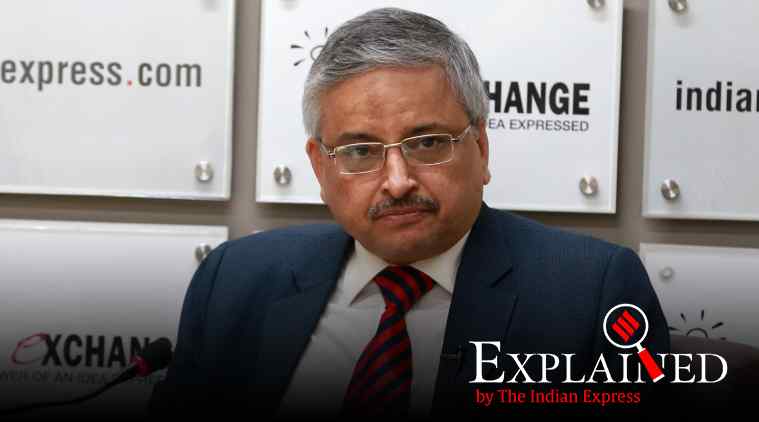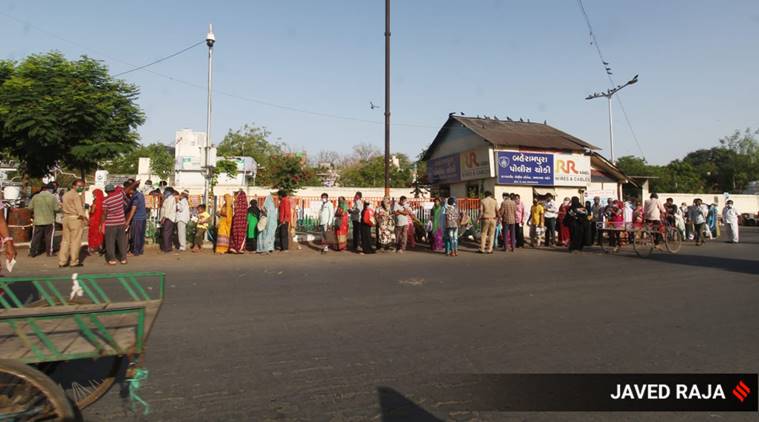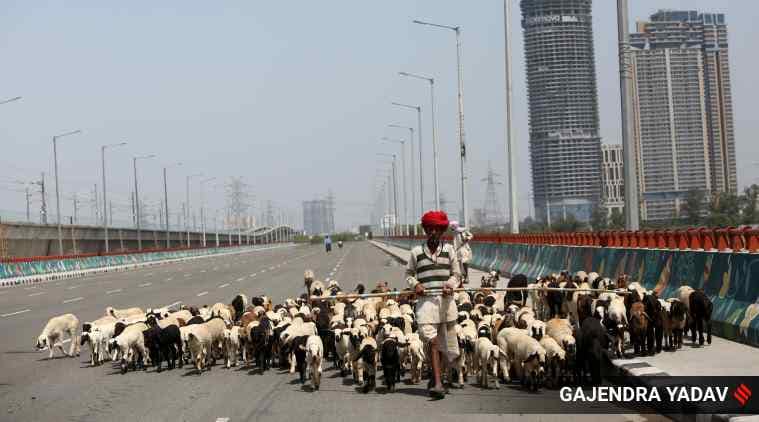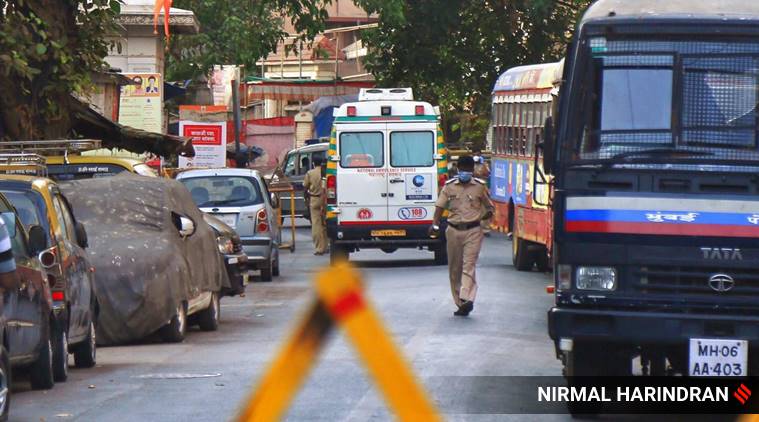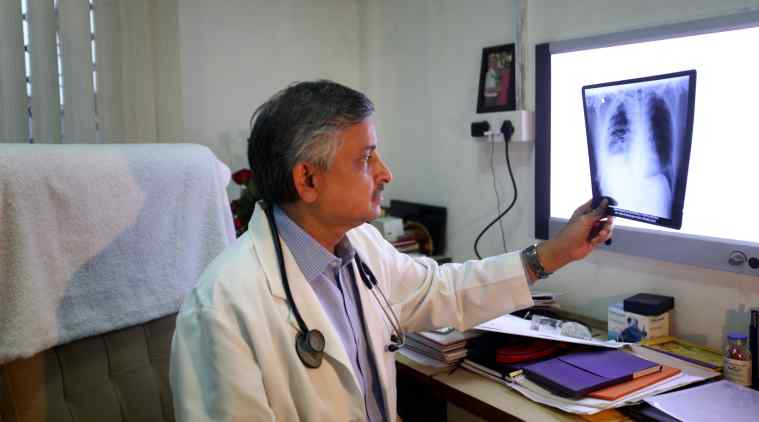Dr Randeep Guleria, AIIMS Director and India’s top pulmonologist, is a member of the high-level technical committee to guide strategies for COVID-19 prevention and control. He speaks to The Indian Express.
Dr Randeep Guleria, AIIMS Director and India’s top pulmonologist, is a member of the high-level technical committee to guide strategies for COVID-19 prevention and control. He also heads a team that runs the National Teleconsultation Centre, connecting doctors across the country in real time for treatment of COVID-19 patients.
Since March 12 when India effectively closed its borders and WHO termed COVID-19 a pandemic, what has surprised you so far? And what hasn’t.
Globally, what surprised me is how some countries took the pandemic lightly — in terms of lockdown, stopping international travel, how they thought that for some reason they were immune, that the virus would not travel there. These countries had time to be more active, once they realised what was happening in China.
(At home), what surprised me was the response to the Prime Minister’s appeal for janata curfew; what disappointed me was how, despite understanding the importance of the curfew, some groups did not follow it. It is a citizens’ movement and if we have to win the battle against COVID-19, it has to be won at a community level rather than at the hospital level. Hospitals will look after sick patients; it is community involvement that will actually stop the pandemic.
Just over 1,800 positive cases and over 40 deaths. Many ask, have we not tested enough? Are we under-reporting positive cases and deaths?
Let’s look at the aim of testing. A lot of people argue that we need to keep testing. But there should be some reason behind it. The initial question was to see: are there cases coming from outside? And that’s why there was quarantine and testing that was being done of those with travel history or contact history.
In the current scenario, with the lockdown, the aim is to see if we can prevent the spread and to identify those areas where there are large number of cases. Testing has to go hand in hand while answering these questions. Also, you must remember that in our country we have very good surveillance data, which is the IDSP data, which is looking from a PHC level or ASHA worker level and upwards. It is mapping anyone who has flu-like symptoms or any individual who is admitted with severe respiratory illness. This give us a rough idea, in any area, if there is a cluster developing.
Also read | WHO’s representative Dr Henk Bekedam: ‘India does need to step up testing, it is on that path’
Testing everyone will need a use of lot of resources and will not give us any concrete data. Testing the population that needs to be tested and which will help policymakers to make a decision is important.
As things progress, testing strategy will also change. What we need to answer through testing is: which hotspots are developing; is there a significant community spread that is taking place, so that decisions can be made about more regressive containment strategies and to upscale health resources in these clusters. The aim is to see that if we do have increasing number of cases, they are localised to one area, and then it will be easier for us to manage — rather than having pockets all over the country.
Suppose a patient is terminally ill with cancer and tests positive for COVID-19 and succumbs. Is that a COVID-19 death?
A COVID-19 death is one when a patient dies of COVID-related complications. You should understand 80% of the people will have COVID-19 and will recover as mild illness. If a terminally ill patient has tested positive and has COVID-19-caused pneumonia and sepsis and that leads to death, that will be a COVID-19-related death. If COVID-19 does not cause any respiratory problem, it is not a COVID-19 death.
? Express Explained is now on Telegram. Click here to join our channel (@ieexplained) and stay updated with the latest
Everyone is talking about community transmission as the most dangerous part. How should we understand this?
Ultimately, to some extent, community transmission will occur in all pandemics. Even if we are able to prevent community transmission today, at some point in time, you will open up travel. At that time, there will be some people who will come with an infection and carry it forward.
It is not a question whether we can forever prevent community transmission. What we are looking at is: can we, in the beginning, prevent widespread community transmission at one point in time so that we don’t have a steep rise in the number of cases but we flatten the curve. (This helps us) stretch the period by which we will have a lower number of cases and health resources are not put under pressure, and we get more time for better treatment strategies.
Also read | Where does the virus go from here?
But to say that we will never have community transmission will not be a correct statement. There will be some community transmission. As of now, the aim is that even if there is some degree of community spread, we contain it and localise it to a certain area and focus our resources in terms of providing good healthcare and not allowing it to spread to other areas.
Almost 10 days into the lockdown, and keeping in mind the economic cost of such a massive lockdown, people are asking questions whether such a blunt instrument was needed especially when the mortality rate is low and especially when India is such a young country…
I do agree that we have the advantage that the average age of our population is much younger compared to Italy’s. The mortality is much higher in older age groups.
If you look at decade-wide stratification, it is much higher in the age group of 80s compared to those in their 70s. However, we must understand that India has a large population and even if we have cases that are not severe, still we will have a significant number who would need hospitalisation.
Also, we have one more thing to keep in mind, although we are a young population, many of us have co-morbidities. India is the diabetic capital of the world. (The segment of) our population that has heart disease gets it 10 years earlier than those in the West. Therefore, the strategy for having a lockdown is essential so that we are able to contain widespread infection and we get time to improve our health resources.
Don’t miss from Explained: Rate of COVID-19 spread in India, world
In my mind, the economic cost of having a huge outbreak is much more in terms of both the cost and the mortality than what we will lose during the lockdown in economic terms. That is why the lockdown makes sense, even though it is causing a lot of strain on the country’s economy.
As the head of AIIMS, the country’s premier health institution, what are the metrics that you are looking at?
What we are looking at is: containment, containment, containment. We have to contain it in localised areas rather than have a widespread infection across the country. We have to upscale our health facilities. It is a time when the public sector and private sector need to come together. There are areas where the public sector may not have as good facilities in terms of ICU care and ventilatory support, for example. And the private sector might be in a much better position to save lives in terms of ventilatory support. It is important that we collate our health resources and work as a team to save lives.
What should be the government’s next step in the public policy intervention, especially when cases in India are not growing exponentially, as compared to countries in the west?
My issue is to start quickly looking at data. There are two or three questions there. One, how long should the lockdown continue? Two, should it be throughout the country or, three, (should) there be a graded lifting of the lockdown in certain areas?
That is dependent on the data that emerges, in terms of the number of cases, hotspots, and areas in our country which are safe, are protected because of the lockdown, and don’t have a significant number of cases. That data is important so that we can take a call on (these questions).
Also read | Clusters lead to surge in spread but could help contain it too
We are lucky that the number of cases has not skyrocketed. But, at the same time, I don’t think we should sit back. We have to be very aggressive in trying to maintain this by containing the spread in a geographical area rather than allowing it to spread. We need active case finding and maybe more testing in these areas.
The third aspect is consolidating our health sector resources so that we can provide optimum care, and that means respiratory care or critical care.
In the pandemic, what is the definition of ‘we have the infection under control’? In the US, experts say that’s when the curve of new cases begins to fall. In a country of 1 billion plus, what is the indicator?
This is a difficult question. A lot of people are doing mathematical modelling on this. I think it will be difficult to draw a whole curve for a nation. We will have to do it region-wise. And that is why lockdown becomes more important.
What are the unique challenges of fighting this pandemic? There are reports of a shortage of PPE (personal protective equipment) and ventilators.
This is, in many ways, a unique pandemic. The most worrisome is a pandemic that causes pneumonia and respiratory failure. Because your requirement of protection and treatment is at a very high end.
If you have a pandemic, where an agent is waterborne, you can control it in an easier manner. But most pandemics are because of droplet infections that spread very rapidly. Often, they are milder like H1N1. Here, we don’t know what is the mortality as we don’t know the denominator.
But this is spreading very quickly and in high-risk patients, it is causing significant mortality. Therefore, for any hospital, the challenge is how to upscale its infrastructure for critical care. Like how do we get more ventilators or how do we free existing ones; how do we protect our healthcare workers and for that we need a large amount of PPE.
More important is how do we allay the fear of healthcare workers. Many are scared about themselves, their families, and about taking the infection home. And that is something we need to work on. We need to work on developing an environment where they feel that everything is being done to protect them when they are looking after these patients.
We have adequate and reassuring stocks of PPE. We also need to develop strategies for ventilators. Also, there is a need to see how we can prevent the spread to other areas. There has to be a dedicated hospital or a building. In Italy, we saw common wards, with COVID and non-COVID areas — where the spread of infection was high. It has be isolated as a standalone facility. Because (then) you are able to conserve your resources in that area, PPE requirement comes down and infection rate is low. That strategy has to be developed.
Another very important thing is to have manpower that is trained in infection control and trained in managing critically ill patients. These patients require intensive management; where lungs are stiff, they need a lot of adjustment in ventilatory strategies. They need drugs to control blood pressure. Some go into kidney failure and need dialysis. For that, you need people who are trained.
We also need to look at strategies, if we can do this through telemedicine. There are centres which run critical care through telemedicine. We need to consider if a specialist can look at two or three ICUs through telemedicine and keep advising the treating team. AIIMS had already set up a connect centre and doctors from anywhere in the country can talk to us about critical-care management.
What do we know so far about the Indian strain of the virus?
Research is still going on. There is a lot of speculation if the strain in India is less virulent. I am not sure if we have that data. There is a lot of research going on a vaccine, as we have isolated the virus. A lot of studies are going on to look at novel therapies based on different drugs, looking at various models.
There are all kinds of charts, studies and projections doing the rounds. How do you deal with such numbers in India?
A lot of data that is being generated is based on modelling. Everyone can do that by putting it into an algorithm. A lot of modelling data takes into account a lot of factors and variables which we are not very sure of. They could vary due to what happens due to the lockdown. There are many unknowns: the lockdown, rise in temperature, how the virus has mutated. I personally feel we should look at how the graph is trending and then be able to give some idea, rather than relying on modelling.
The ICMR has recommended hydroxychloroquine for health workers. US President Trump had spoken of azithromycin with hydroxychloroquine. What is the evidence?
The US FDA (Food and Drug Administration) has approved through emergency approval the use of these two drugs for sick patients. We recommended these many days ago. We have looked at the data, both the laboratory data and some data from France and China. Based on looking at the mechanics of the drug, the safety profile of the drug, we found it to be safe. Keeping that in mind, we did a risk-benefit analysis and came to the conclusion that there could be benefit and little risk, if healthy people like healthcare persons, under close monitoring, do take it. Both of these are still on low-quality evidence and as we go ahead, more evidence will be available.
There are reports that higher temperature can reduce the virulence.
The temperature theory is basically that as temperature goes up, the virus will not survive for a very long period of time. The virus probably will not survive for a long duration in an outdoor environment, if the temperature is above 40°C. But having said that, one must remember two things: we are still having outbreaks in Singapore and other areas which are tropical; second, a lot of us spend time indoors where the temperature is air-conditioned. And if we have a cough and cold there, the virus can stay viable in that environment for a long period of time.
This could be in a shopping mall or an office. Therefore, the infection could still be transmitted. So summer may help in preventing the transmission outside but, possibly, not indoors.
Here’s a quick Coronavirus guide from Express Explained to keep you updated: What can cause a COVID-19 patient to relapse after recovery? | COVID-19 lockdown has cleaned up the air, but this may not be good news. Here’s why | Can alternative medicine work against the coronavirus? | A five-minute test for COVID-19 has been readied, India may get it too | How India is building up defence during lockdown | Why only a fraction of those with coronavirus suffer acutely | How do healthcare workers protect themselves from getting infected? | What does it take to set up isolation wards?
? The Indian Express is now on Telegram. Click here to join our channel (@indianexpress) and stay updated with the latest headlines
For all the latest Explained News, download Indian Express App.
Source: Read Full Article




